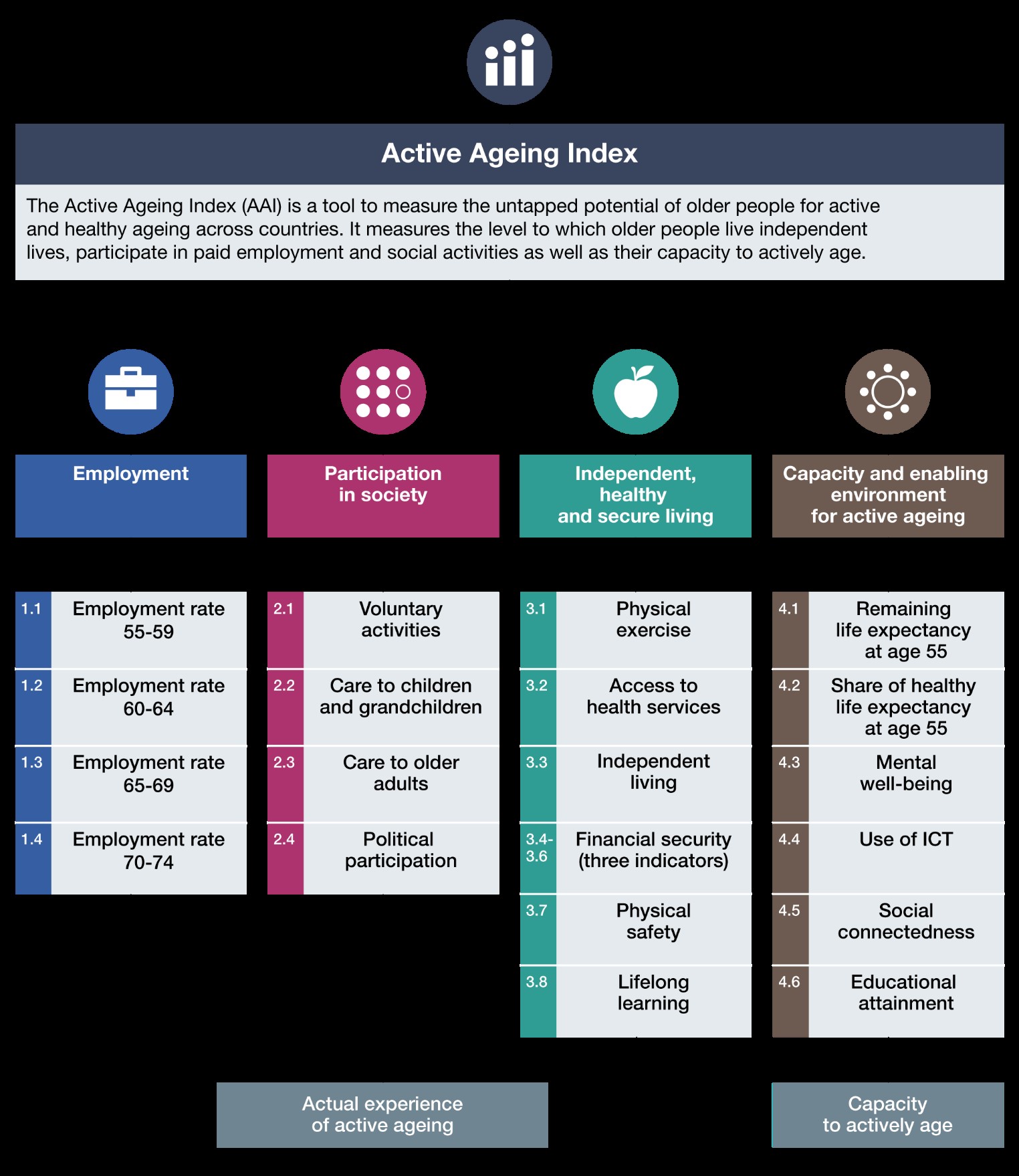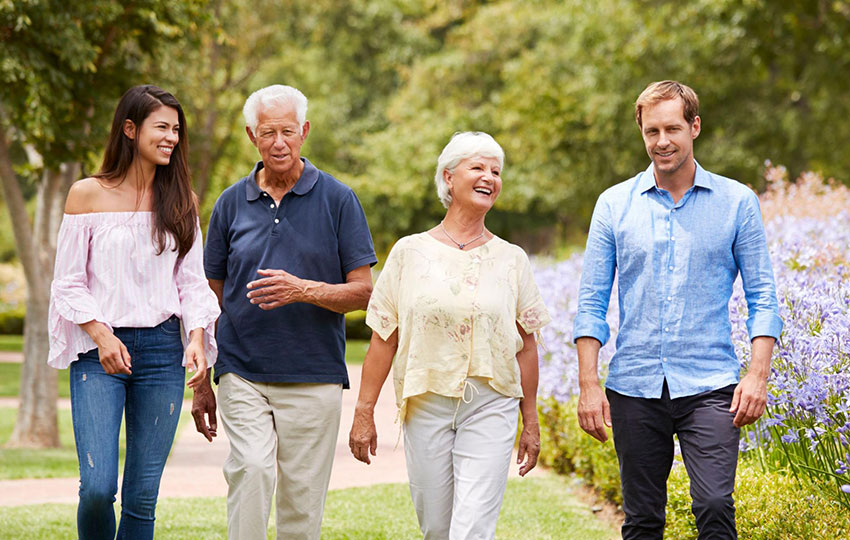3 dimensions of active ageing: the Active Ageing Index
Active ageing is not just about staying longer in employment and retiring later. It is also about social participation, providing care within the family and volunteering in the community; and it is about being in good health and being able to live independently.
These three broad dimensions of active ageing – employment, social participation and independent living – are brought together in the Active Ageing Index (AAI) [1]. It has been calculated for women and men in every EU country, using a variety of data sources available. The Index weighs the indicators and summarises them into a single score that is presented in the map below.
Source: https://ec.europa.eu/social/main.jsp?langId=en&catId=1062&newsId=2430&furtherNews=yes
Active ageing, GDP and life satisfaction
The AAI can be looked at in conjunction with other indicators, for instance GDP per capita. There is a close relationship between the two: the more prosperous countries tend to score higher on the AAI. The causality might well go both ways: richer countries can put in place better conditions for active ageing; conversely, countries with very active older populations, notably in terms of employment, would have a larger workforce and could produce more.
It is also interesting to see that the AAI is strongly and positively correlated to life satisfaction among the over-55s. So, staying active in old age is not only good for society and the economy, but apparently also for the older people themselves.
Source: https://ec.europa.eu/social/main.jsp?langId=en&catId=1062&newsId=2430&furtherNews=yes
One interesting feature of the AAI is that it can be calculated separately for women and men. Indeed, the activities and living conditions differ between women and men also in old age. Women lag behind men in important aspects of active ageing. They score lower especially when it comes to employment and income. And although women live longer than men, they are also more often afflicted by poor health. Clearly, if they are to succeed, active ageing strategies must pay attention to such gender differences.

The Active Ageing Index was developed by the United Nations Economic Commission for Europe (UNECE) and the European Commission’s Directorate General for Employment, Social Affairs and Inclusion. The methodological and analytical work was carried out by the European Centre for Social Welfare Policy and Research and Professor Asghar Zaïdi from the Centre for Research on Ageing, University of Southampton.
Source: https://ec.europa.eu/social/main.jsp?langId=en&catId=1062&newsId=2430&furtherNews=yes
For more information on Active Ageing actions across Europe, you can visit the Colabor-Active project’s official website.

